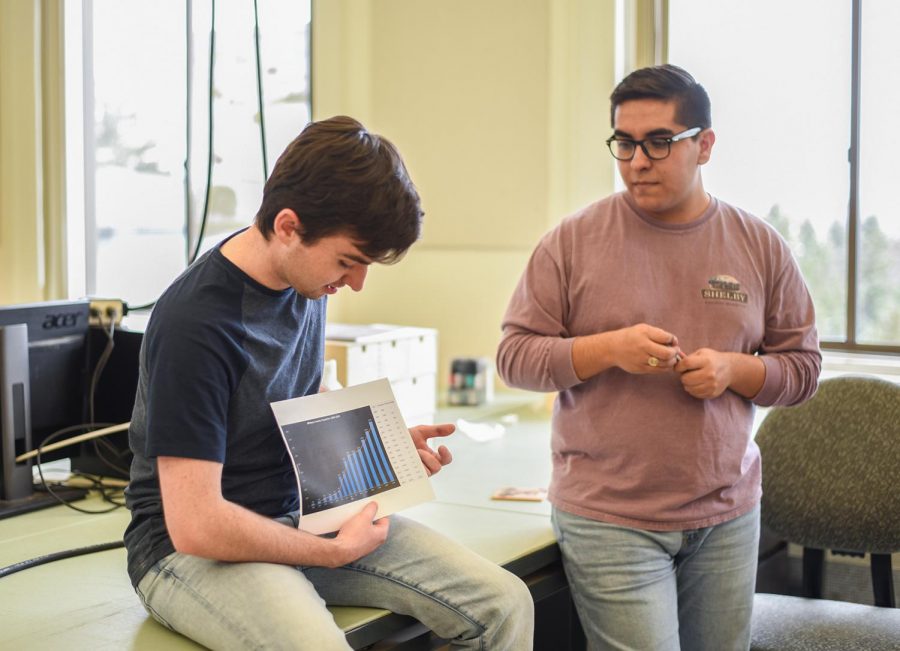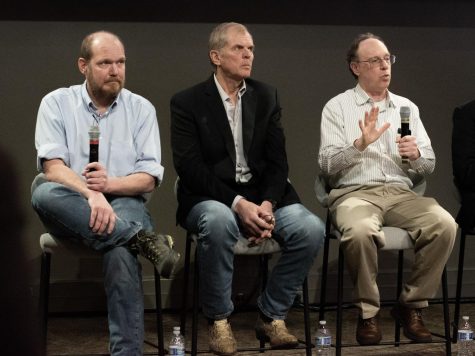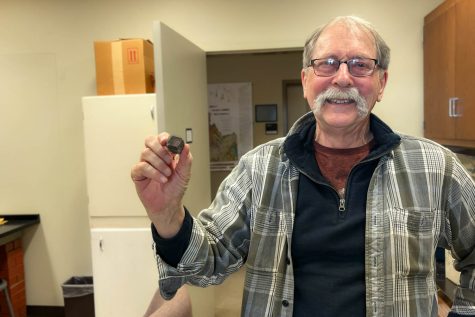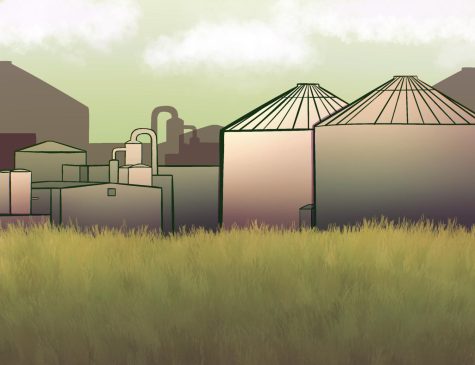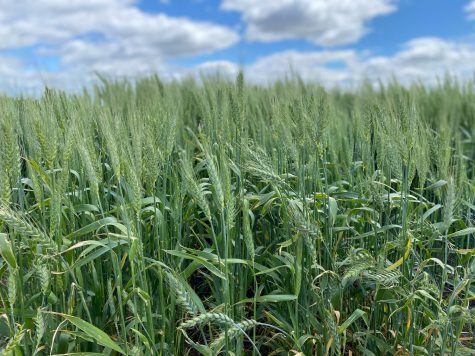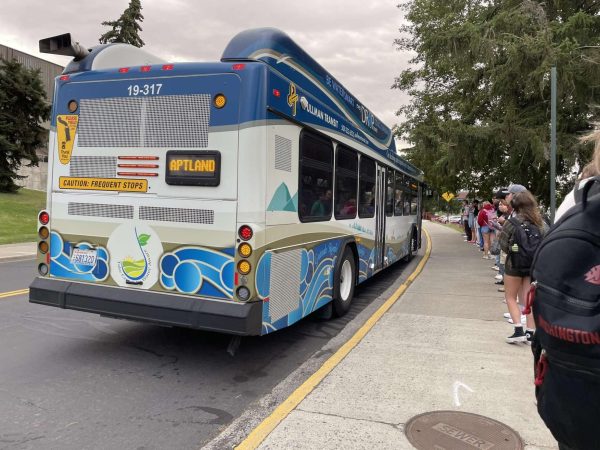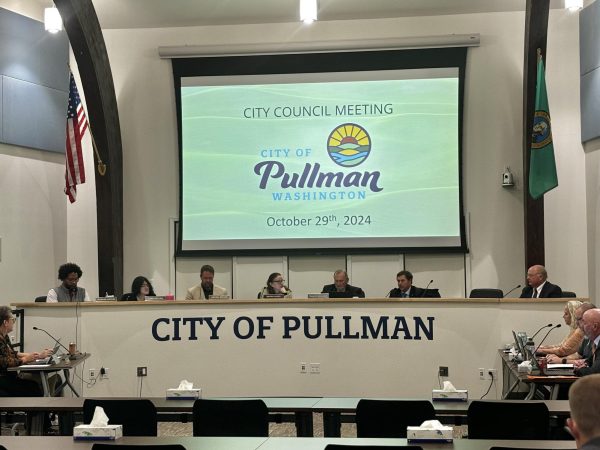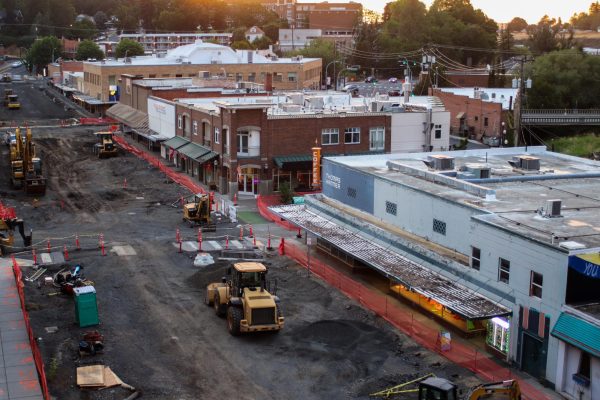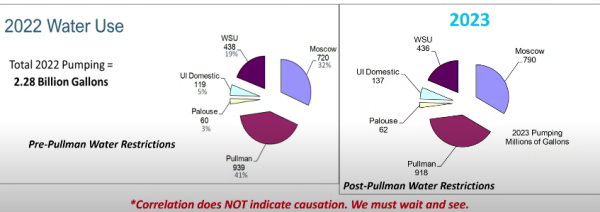The Big Picture
As students design a master plan for Pullman, the “climate crisis is the backdrop of it all”
Mark Lees, a junior landscape architecture major, and Jesus Gomez, a junior landscape architecture major, discuss how they predicted the population for the future project on March 2 at Carpenter Hall.
Landscape architecture students at WSU are applying research on rising temperatures that is due to climate change for a year-long project focused on developing Pullman’s Gateway District.
Steve Austin, a clinical assistant professor in the School of Design and Construction, said the Gateway District is the path from the WSU campus, near Sloan Hall, down to the bottom of the hill by the Visitor Center.
About nine landscape architecture students are working on master plans this semester. Next semester, about 40 architecture and interior design students will work on the project.
“This is a big picture,” Austin said. “It’s not as if next year, bulldozers will be down there building this stuff, but it’s mainly an idea that we put out there for people to talk about it.”
20 years from now
Austin said the old way of doing business will change in the future if climate change continues to get worse. Transportation and architecture will be different in 20 to 30 years.
“The climate crisis is the backdrop of it all,” he said.
Buildings will need to function in a hotter environment than what is normal, Austin said.
Students used the United Kingdom’s model of going ‘net zero’ by 2050 in their plans.
Austin said the use of non-electric cars will be limited if the model is adopted by the U.S.
There is not a practical option to make electric planes right now, so travel would be restricted to electric trains and cars, he said.
“I’m not making a prediction,” Austin said. “I’m saying that it’s probably going to happen exactly based on this report and if the U.S. was to implement a system.”
Francis Benjamin, a 37-year Pullman resident and former city council member, said the students were told early on not to worry about finding sources for funding.
“This is something where we want them to really dream and think outside the box,” he said.
Another issue the class hopes to address is the path up and down the hill between Pullman and downtown. Some ideas include running cable cars like in San Francisco, or gondolas.
“Have you walked downtown from up here on campus, how’s it walking back?” Austin said.
Josiah Pearson, junior landscape architecture student, said he would want to see an Amtrak station in Pullman to act as the city’s main hub of transportation.
Jesus Gomez, junior landscape architecture student, said he is making plans for an interactive area, like a plaza. The area would be a place for people to sit and walk around.
Pullman and WSU’s long history together
Benjamin said WSU and the city have worked together several times in the past.
He sat on the Pullman City Council for 12 years, starting in the early 2000s. Benjamin now helps lead the Pullman 2040 project.
The relationship between Pullman and the university varies between the leadership at both entities. Benjamin said Pullman and WSU are in a golden era right now.
“If I look back to the last 30 plus years that I’ve been in Pullman, I think it’s one of the more positive times of WSU and the city,” he said.
If the project involves building more roads, city funding will need to be secured. If the plans include building new structures the funding just depends on who would own the building, Benjamin said.
Marie Dymkoski, Pullman Chamber of Commerce director, said the chamber acts as a conduit between the university and the city, specifically the business community.
Dymkoski said in the past 15 years there have been several ideas to connect the two entities but some of the ideas have not come to fruition.
“Instructors have tried to create class dynamics for them to learn things but they maybe didn’t necessarily have the connection to the city at the time,” Dymkoski said. “It was a class project that just got put on a shelf not for any reason, except for that it just never went anywhere.”
Classes in the past have worked on a project similar to this, she said. About four years ago a class in the School of Design and Construction created a walking brochure for Pullman. Before then, the brochure had not been updated since the 1960s.
The chamber printed the brochures and continued to pass them out to people.
Austin and the students met with College Hill representatives, Pullman City Council and other community groups throughout the project to collect community feedback on what they want to see in the plans.
The project team will meet at the end of the project to present their plans. The students will explain the climate crisis and how their designs addressed it.
“I think community connections are critical right now,” Benjamin said. “We need to build relations and better understand each other, and not see differences but actually see the commonality.”

Madysen is a Senior journalism and media production major from Rosalia, Washington. She also is involved with Residence Life, the Association for Women...


